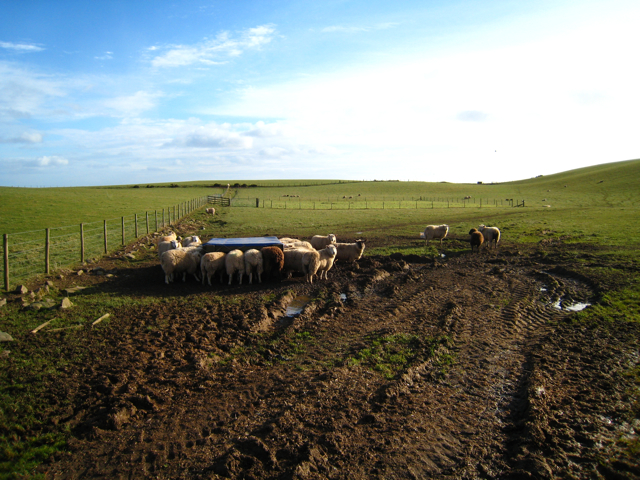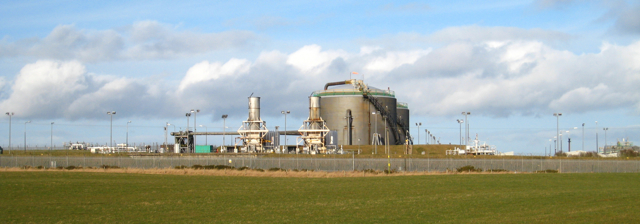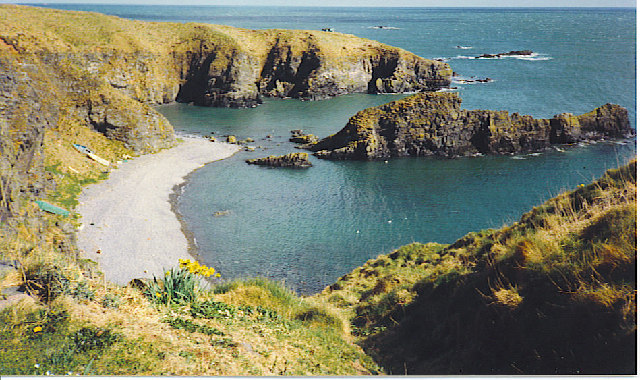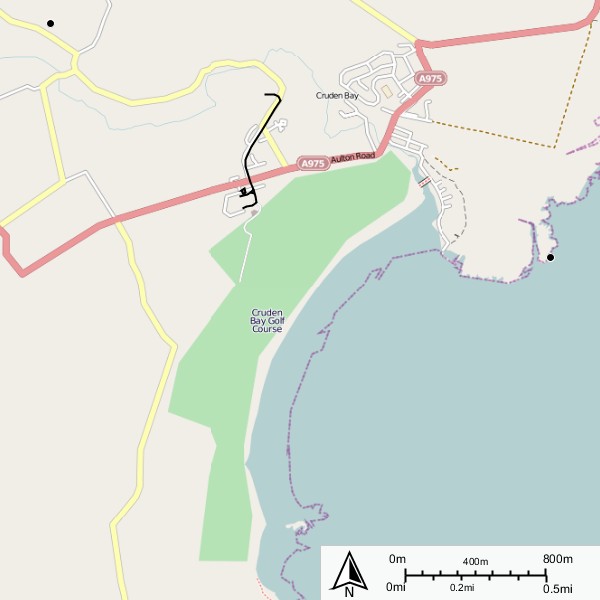Bruce's Haven
Bay in Aberdeenshire
Scotland
Bruce's Haven

Bruce's Haven is a small coastal bay located in the picturesque region of Aberdeenshire, Scotland. Situated along the North Sea coastline, this tranquil haven offers visitors a glimpse into the region's rich history and natural beauty.
Named after King Robert the Bruce, who is said to have sought refuge in this very bay during the 14th century, Bruce's Haven boasts a unique historical significance. The bay was once a bustling trading port, serving as a crucial link between the mainland and the northern isles. Although its prominence as a port has diminished over the years, remnants of its maritime past can still be seen in the form of weathered stone structures and a small pier.
Beyond its historical allure, Bruce's Haven is renowned for its stunning natural surroundings. The bay is flanked by rugged cliffs, providing breathtaking views of the North Sea and the surrounding coastline. The area is also home to a diverse range of flora and fauna, making it a haven for nature enthusiasts and birdwatchers.
Visitors to Bruce's Haven can enjoy a leisurely stroll along the sandy beach, take in the fresh sea air, and explore the rock pools teeming with marine life. The bay is also a popular spot for water sports such as kayaking and paddleboarding, offering visitors a chance to engage in thrilling activities amidst the serene coastal backdrop.
Overall, Bruce's Haven is a captivating destination that seamlessly blends history and natural beauty, making it a must-visit for those seeking a tranquil retreat in the heart of Aberdeenshire.
If you have any feedback on the listing, please let us know in the comments section below.
Bruce's Haven Images
Images are sourced within 2km of 57.372624/-1.8924208 or Grid Reference NK0631. Thanks to Geograph Open Source API. All images are credited.



Bruce's Haven is located at Grid Ref: NK0631 (Lat: 57.372624, Lng: -1.8924208)
Unitary Authority: Aberdeenshire
Police Authority: North East
What 3 Words
///reinvest.examine.overlaps. Near Port Erroll, Aberdeenshire
Nearby Locations
Related Wikis
Nearby Amenities
Located within 500m of 57.372624,-1.8924208Have you been to Bruce's Haven?
Leave your review of Bruce's Haven below (or comments, questions and feedback).



















